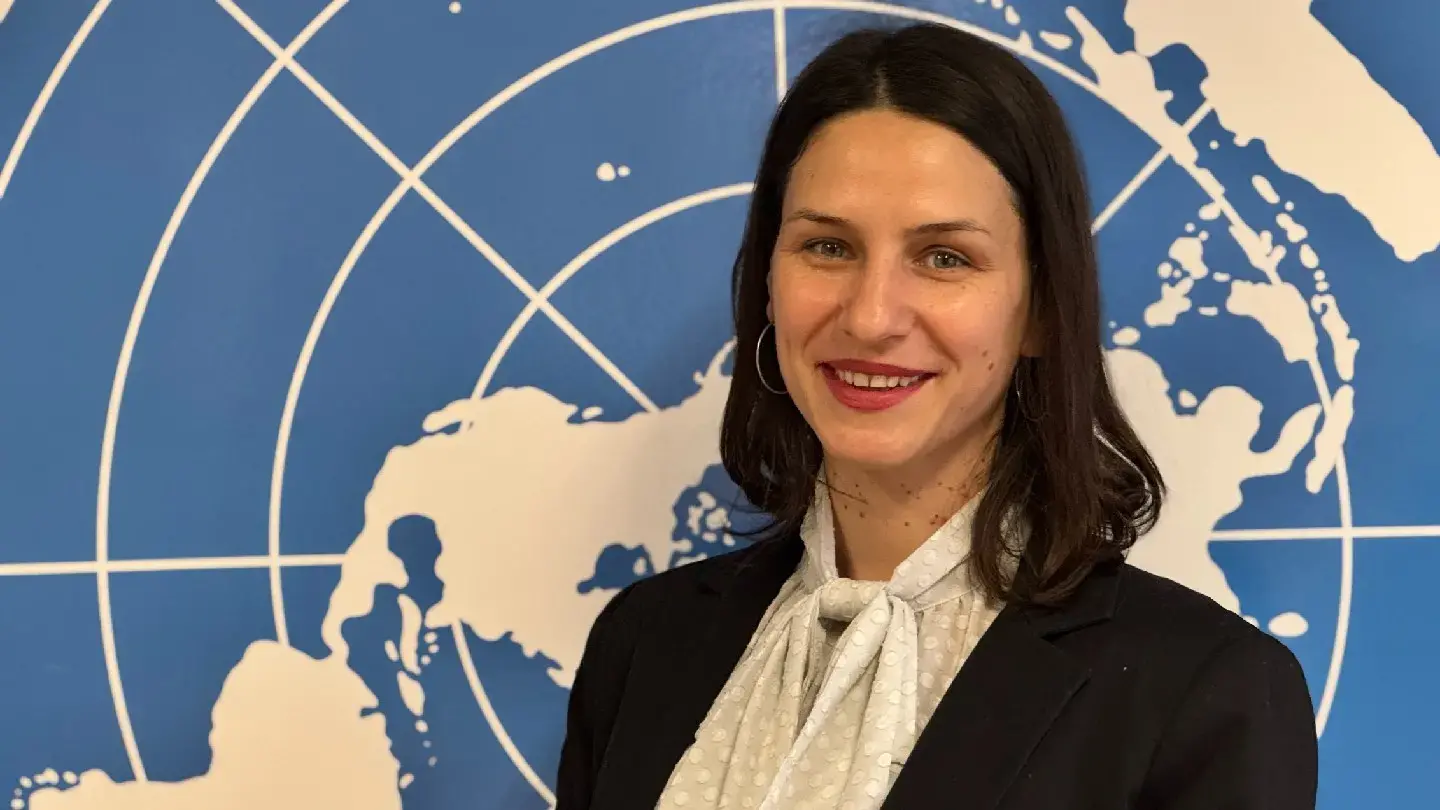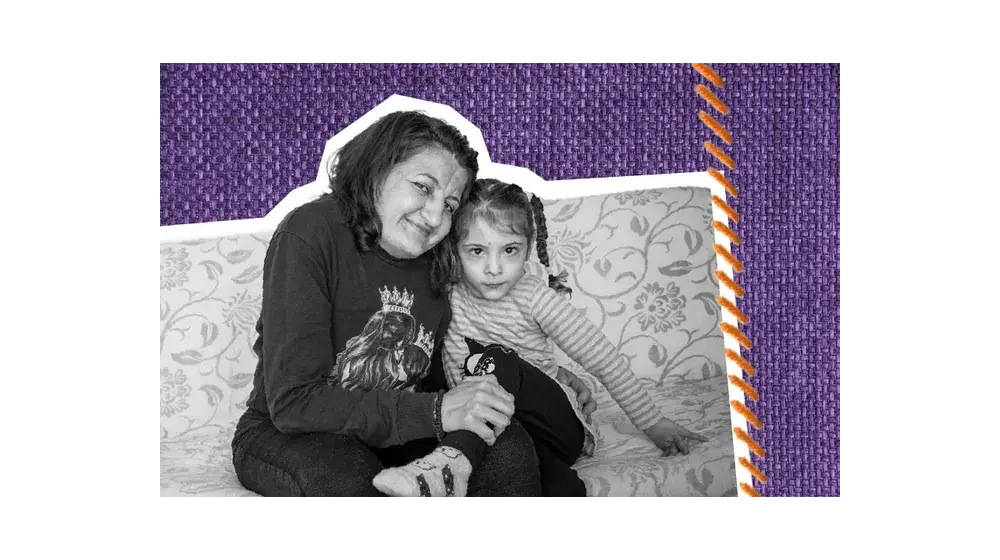NEW YORK, 30 March 2022 — Nearly half of all pregnancies, totalling 121 million each year throughout the world, are unintended. For the women and girls affected, the most life-altering reproductive choice—whether or not to become pregnant—is no choice at all, explains the State of World Population 2022 report, released today by UNFPA, the United Nations sexual and reproductive health agency.
The groundbreaking report, “Seeing the Unseen: The case for action in the neglected crisis of unintended pregnancy,” warns that this human rights crisis has profound consequences for societies, women and girls and global health. Over 60 per cent of unintended pregnancies end in abortion and an estimated 45 per cent of all abortions are unsafe, causing 5 – 13 per cent of all maternal deaths, thereby having a major impact on the world’s ability to reach the Sustainable Development Goals.
The war in Ukraine and other conflicts and crises around the world are expected to drive an increase in unintended pregnancies, as access to contraception is disrupted and sexual violence increases.
“This report is a wakeup call. The staggering number of unintended pregnancies represents a global failure to uphold women and girls’ basic human rights,” says UNFPA Executive Director Dr. Natalia Kanem. “For the women affected, the most life-altering reproductive choice—whether or not to become pregnant—is no choice at all. By putting the power to make this most fundamental decision squarely in the hands of women and girls, societies can ensure that motherhood is an aspiration and not an inevitability.”
Key findings: Gender inequality and stalled development drive high rates of unintended pregnancies
Globally, an estimated 257 million women who want to avoid pregnancy are not using safe, modern methods of contraception, and where data is available, nearly a quarter of all women are not able to say no to sex. A range of other key factors also contribute to unintended pregnancies, including:
- Lack of sexual and reproductive health care and information
- Contraceptive options that don't suit women's bodies or circumstances
- Harmful norms and stigma surrounding women controlling their own fertility and bodies
- Sexual violence and reproductive coercion
- Judgmental attitudes or shaming in health services
- Poverty and stalled economic development
- Gender inequality
All of these factors reflect the pressure societies place on women and girls to become mothers. An unintended pregnancy is not necessarily a personal failure and may be due to the lack of autonomy society allows or the value placed on women’s lives.
When crisis hits, unintended pregnancies climb
Crisis and conflict rob women of their agency at all levels, drastically increasing the risk of unintended pregnancy at the moment it is most threatening. Women often lose access to contraceptives and sexual violence increases, with some studies showing that over 20 per cent of refugee women and girls will face sexual violence. In Afghanistan, war and disruptions to health systems are expected to lead to an estimated 4.8 million unintended pregnancies by 2025, which will jeopardize the country’s overall stability, peace, and recovery.
“If you had 15 minutes to leave your house, what would you take? Would you grab your passport? Food? Would you remember your contraception?” said UNFPA Executive Director Dr. Natalia Kanem. “In the days, weeks and months after a crisis starts, sexual and reproductive health and protection services save lives, shield women and girls from harm and prevent unintended pregnancies. They are as vital as food, water and shelter.”
The responsibility to act
The report shows how easily the most fundamental rights of women and girls are pushed to the backburner in times of peace and in the midst of war. It calls on decision-makers and health systems to prioritize the prevention of unintended pregnancies by improving the accessibility, acceptability, quality and variety of contraception and greatly expanding quality sexual and reproductive health care and information.
It urges policy makers, community leaders and all individuals to empower women and girls to make affirmative decisions about sex, contraception and motherhood, and to foster societies that recognize the full worth of women and girls. If they do, women and girls will be able to contribute fully to society, and will have the tools, information and power to make this fundamental choice—to have children, or not—for themselves.
Notes to editors
The State of World Population report is UNFPA’s annual flagship publication. Published yearly since 1978, it shines a light on emerging issues in the field of sexual and reproductive health and rights, bringing them into the mainstream and exploring the challenges and opportunities they present for international development.
This report’s analysis builds upon new data from our partner, the Guttmacher Institute, released on 24 March.
As the United Nations sexual and reproductive health agency, UNFPA helps people obtain contraception and life-saving reproductive health services and information and empowers women and girls to make informed decisions about their bodies and lives.
- You can access the UNFPA State of World Population report, Seeing the Unseen: The case for action in the neglected crisis of unintended pregnancy here: www.unfpa.org/swp2022
- For more information about UNFPA, please visit: www.unfpa.org
- For interviews or more information, please contact:
- Eddie Wright: ewright@unfpa.org, +1 917 831 2074
- Zina Alam: zialam@unfpa.org, +1 929 378 9431
Five Key Facts from the 2022 SoWP:
1. Every year, almost half of all pregnancies are unintended.
- Between 2015 and 2019, there were roughly 121 million unintended pregnancies globally each year.
2. Globally, an estimated 257 million women who want to avoid pregnancy are not using safe, modern methods of contraception.
- In 47 countries, about 40 per cent of sexually active women were not using any contraceptive methods to avoid pregnancy.
3. Nearly a quarter of all women are not able to say no to sex (where data is available).
- Contraceptive use is 53 per cent lower among women who have experienced intimate partner violence.
- Studies show that rape-related pregnancies are equally or more likely to occur than pregnancies from consensual sex.
4. Over 60 per cent of unintended pregnancies, and almost 30 per cent of all pregnancies, end in abortion.
- 45 per cent of all abortions performed globally are unsafe.
- Unsafe abortions hospitalize about 7 million women a year globally and cause 5 to 13 per cent of all maternal deaths, one of the leading causes of maternal death.
- In developing countries, unsafe abortions cost an estimated $553 million per year in treatment costs alone.
5. In humanitarian emergencies, such as the ongoing war in Ukraine, many women lose access to contraception and / or experience sexual violence.
- Some studies have shown that over 20 per cent of refugee women and girls will face sexual violence.
- An estimated 4.8 million unintended pregnancies will occur in Afghanistan by 2025 as a result of health system disruptions and gender inequality.
- In the first 12 months of the COVID-19 pandemic, the estimated disruption in contraceptive supplies and services lasted an average of 3.6 months, leading to as many as 1.4 million unintended pregnancies.




